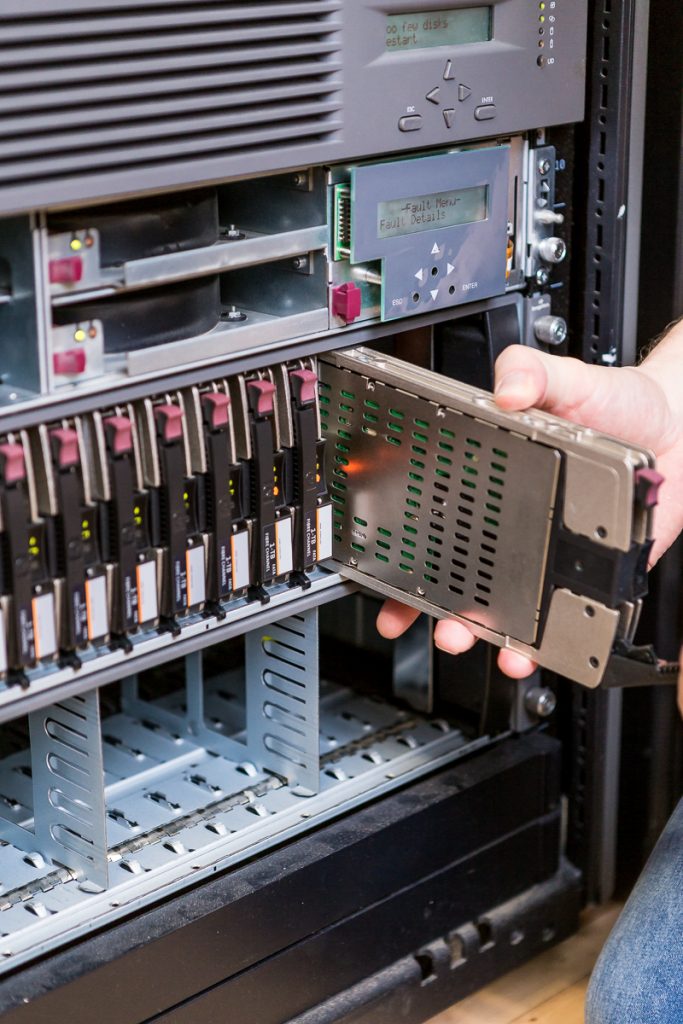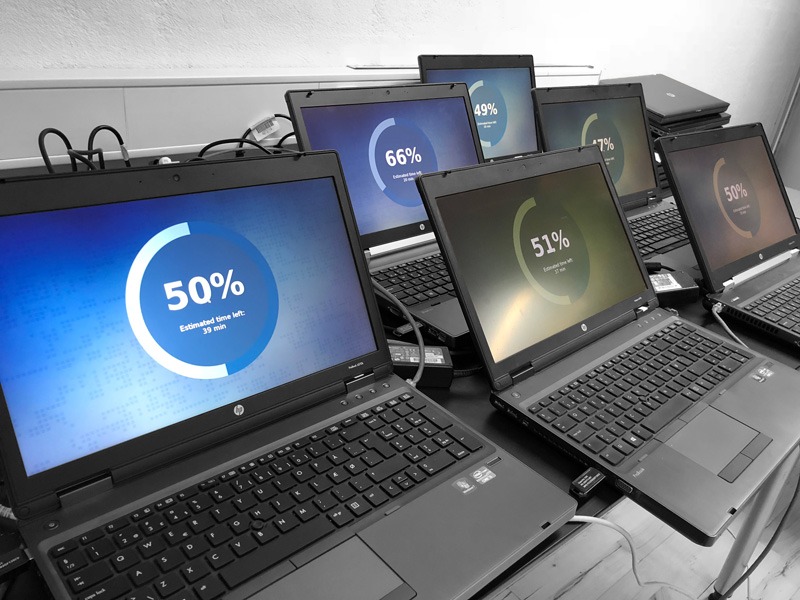In-House Test Center
At Direct Hardware Supply we have our own in-house test center where our technicians test all the equipment we receive. This ensures that we do not have any faulty equipment in our stock and our customers can rely on us to supply good drives that will be working for a very long time.
How we test hard drives
We do not use a specific brand system to do our testing. We attach the drives to a drive shelf which is then attached to a server running Linux with SmartMonTools installed. Why do we do that? Because this means we can read the raw data to determine the actual health of the drive, and indicators to see if a drive might fail very soon. This is called S.M.A.R.T Testing (Self-Monitoring, Analysis and Reporting Technology)
How we determine if a hard drive is good or bad
We usually follow BackBlace’s way of determining whether a drive is good or bad, and some common sense since we are dealing with refurbished hardware.
You can read their analysis here:
What SMART Stats Tell Us About Hard Drives
If we receive a bunch of SUN drives we do not use a SUN system to do the testing. If we receive IBM drives we do not use an IBM system to test them. And if we receive some HP drives, we do not use an HP system either.
We have observed some HP systems doing a short S.M.A.R.T when a drive is inserted. That means it can in most cases detect if a drive is failing or not. But this is not a perfect indicator, as a short S.M.A.R.T test is, as the name suggests, short, where a long test will do a full write test on the drive. That is why we stick to doing a complete S.M.A.R.T test no matter which brand we are testing. If we test SUN drives in a SUN system that does not look at S.M.A.R.T data, you can insert an old failing drive without the storage system knowing it, as it is only collecting this info on its own. That means a drive shown as healthy might in fact be dying.
We do this testing method because many storage systems are known for not doing any sort of S.M.A.R.T testing. That means the system will have no usage data on the drive inserted, and can only assume it’s a brand new one. After this the system has to collect usage data on its own, but while it is collecting this information the drive can die out of the blue, giving no indication of an impending failure. We believe that a usable hard drive is not always a dependable hard drive, and it is the raw S.M.A.R.T data that can tell us if the hard drive is dependable or not. With this method we can avoid many RMA’s since our customers trust us and expect good, healthy hard drives.
By doing S.M.A.R.T testing every time, we ensure that we send good, quality drives to our customers!
Do you have any questions about our testing process? Feel free to contact us. If you have a special requirement we can make some adjustments to fit your needs.


